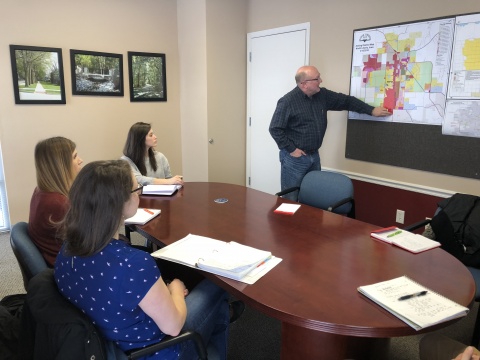North Liberty Public Art Planning Recommendations
Graduate students in the course Growth Management in the School of Urban & Regional Planning completed a report outlining alternatives and best practices to inform future public art planning for the City of North Liberty.
Public art and creative placemaking are increasingly important to Iowa communities for growth and vitality. Research suggests that arts & cultural amenities play a large role in "anchoring" residents to communities while also supporting economic development and helping creating a sense of community identity. The City of North Liberty recognizes the potential for public art to enhance the quality of life of residents, and officials seek to better understand how the City can support public art and work toward a community public art plan.
Urban & Regional Planning students evaluated the potential for public art from a planning perspective. The report provides guidance to the City of North Liberty on implementing a public art plan within the community, including program recommendations and alternatives, public engagement development, funding identification, and optimal siting identification. The report defines public art as "a visual display of any medium that has been planned with the intention of being implemented in the physical public domain, generally outside without any restrictions to accessibility."
The report is divided into three sections. The first provides an overview of public art, types of art, and a brief history of public art initiatives. The economic, social, and public health advantages of implementing public art are also presented within this section to reveal how art benefits a community beyond general aesthetics.
The second section examines ten case studies, which include five Iowa communities and five comparable out-of-state communities. Each case study provides an overview, information on funding, public engagement strategies, and types and locations of public art. These examples demonstrate a variety of ways that public art can be implemented in communities.
The third and final section contains a discussion and recommendations on aspects of a public art program. Implementing a public art program involves establishing a governing body, outlining a budget, determining a public engagement strategy, and designating locations of art forms.
